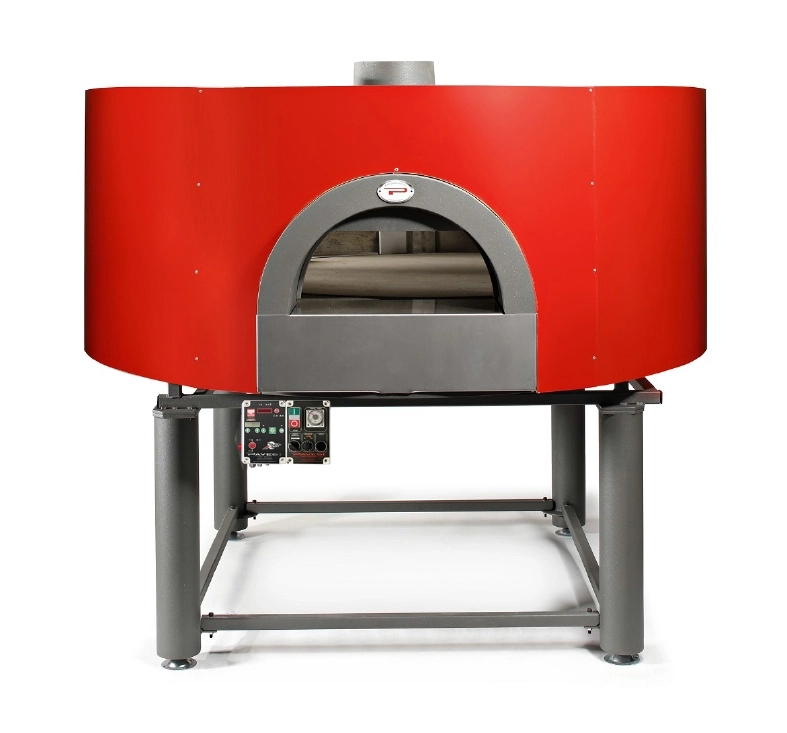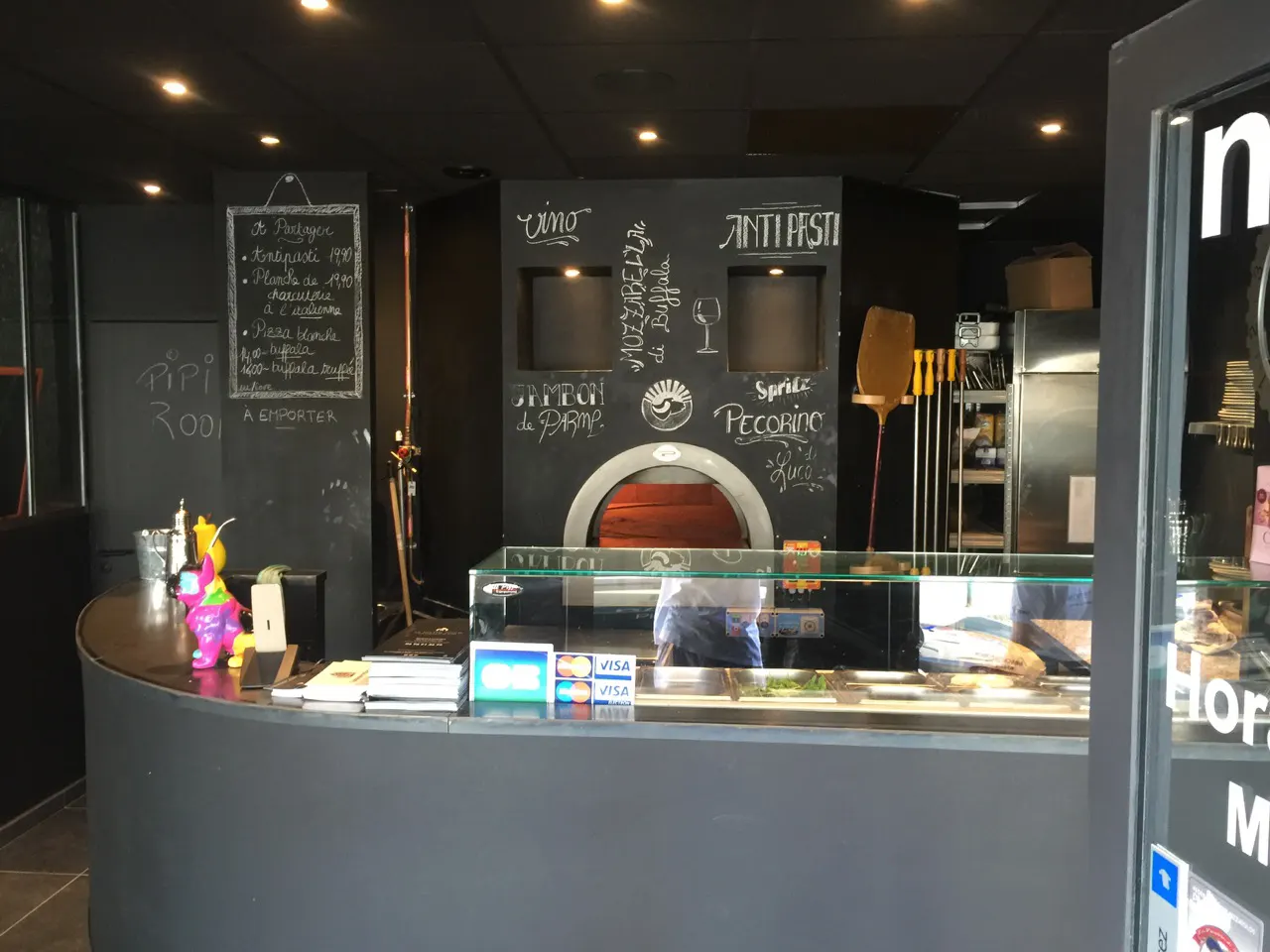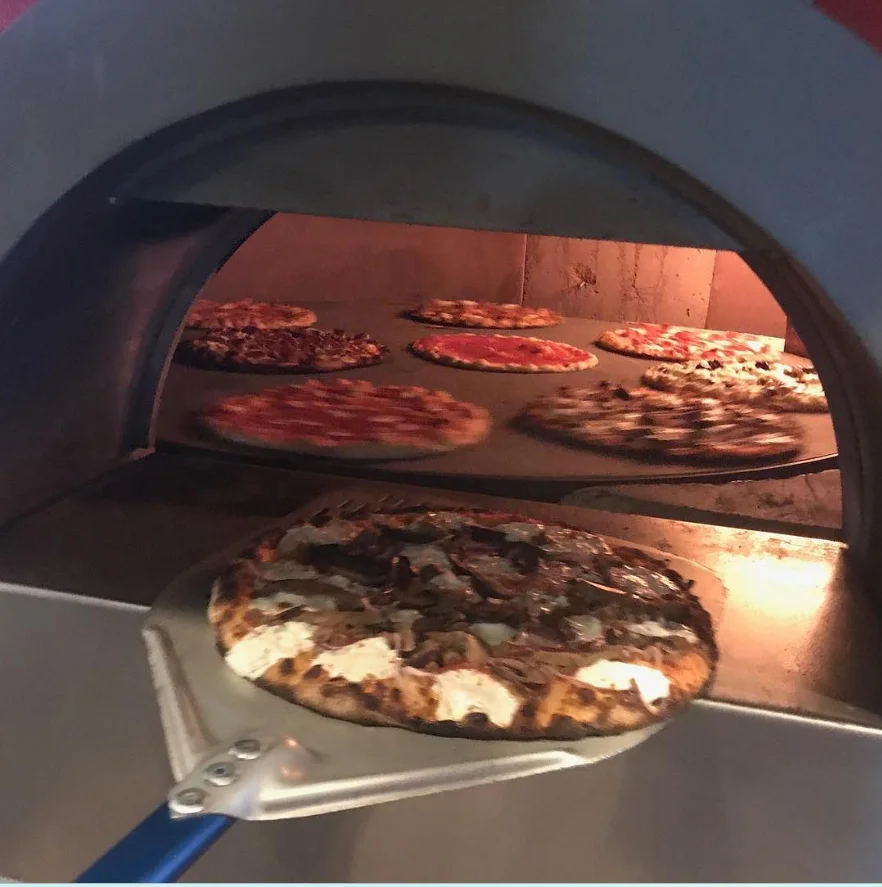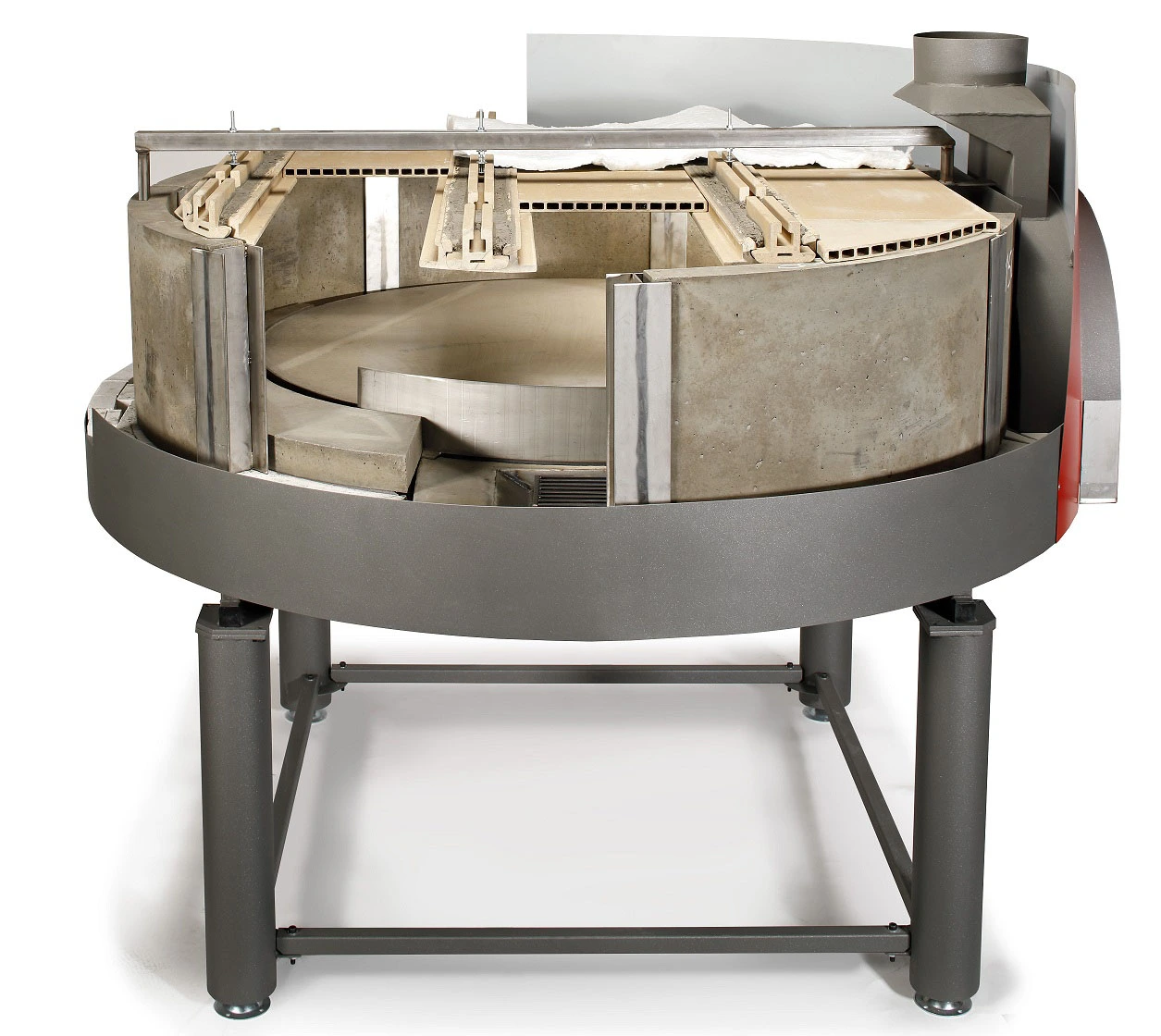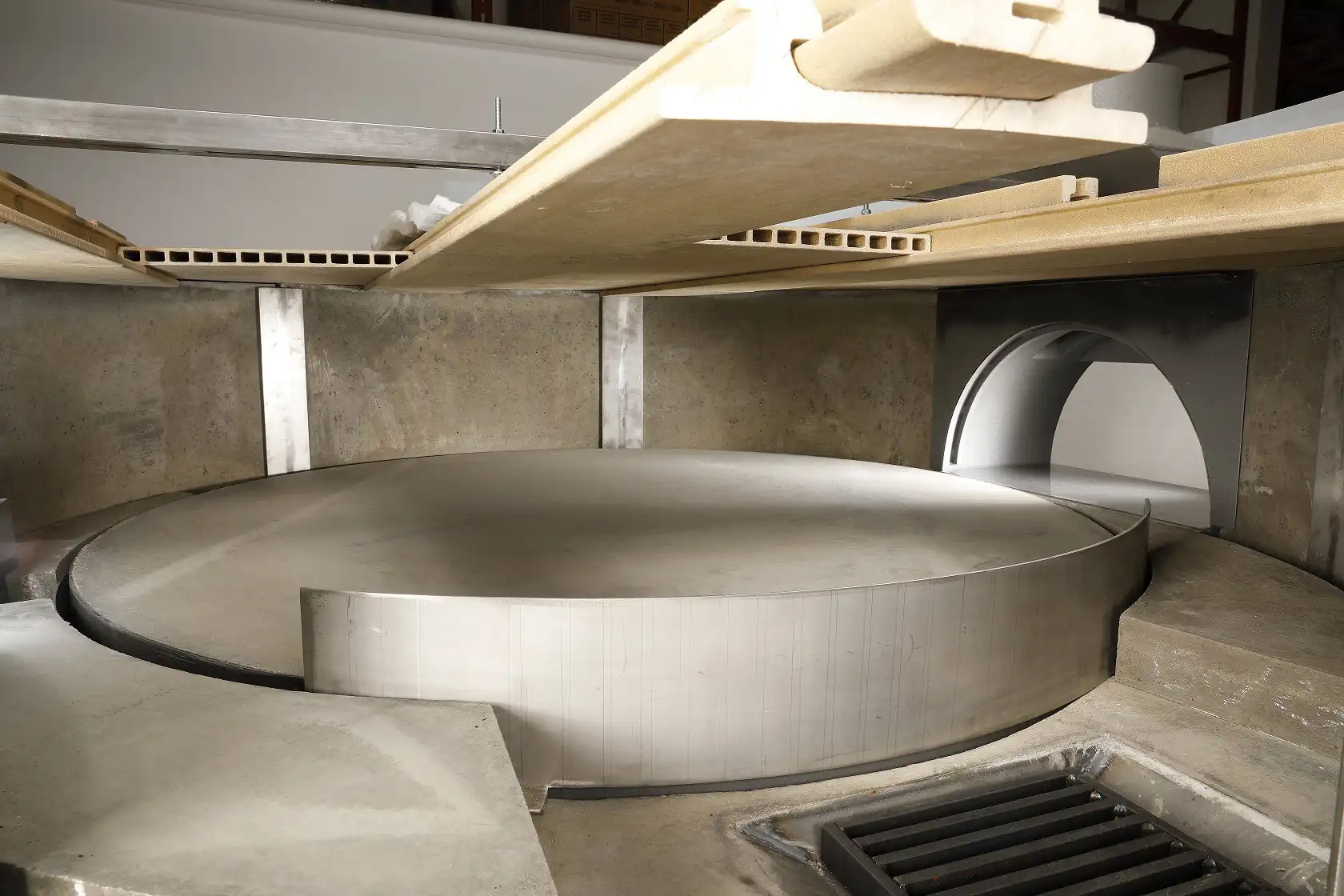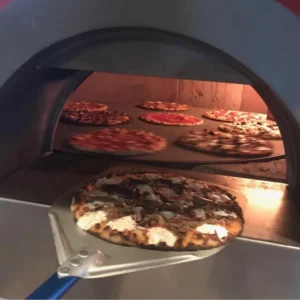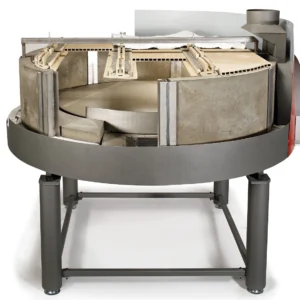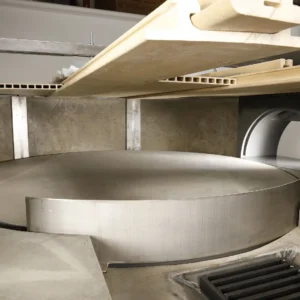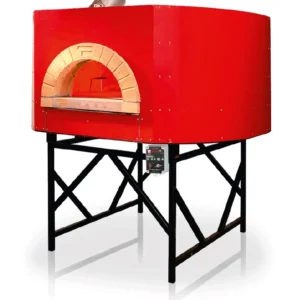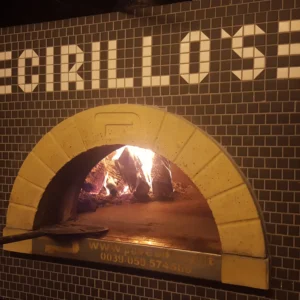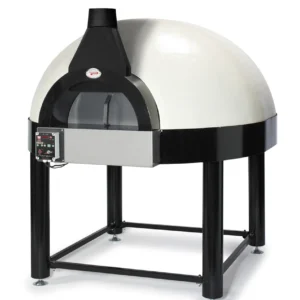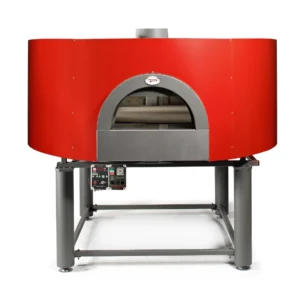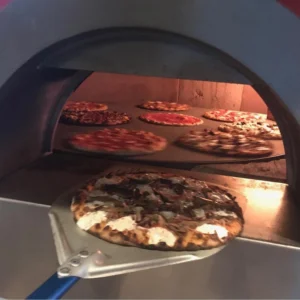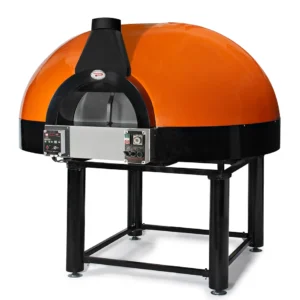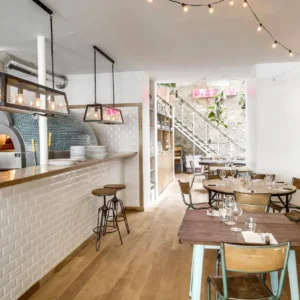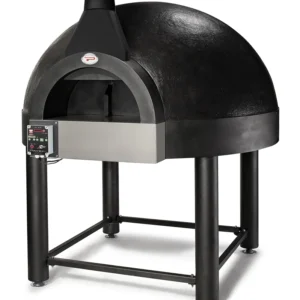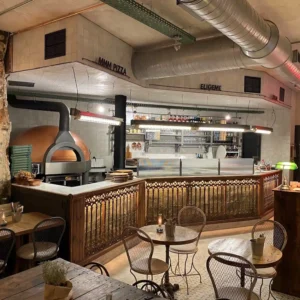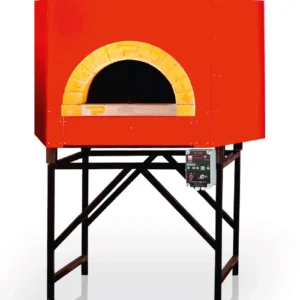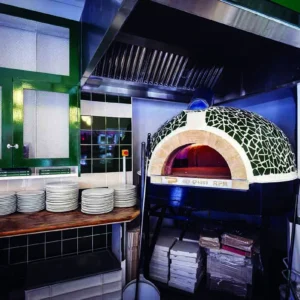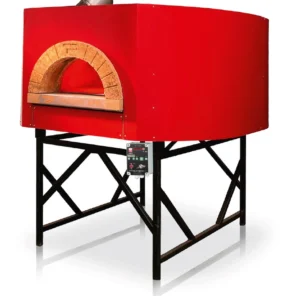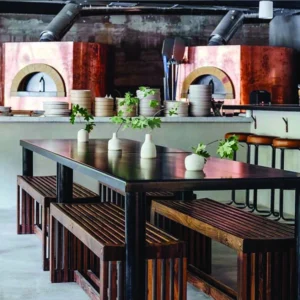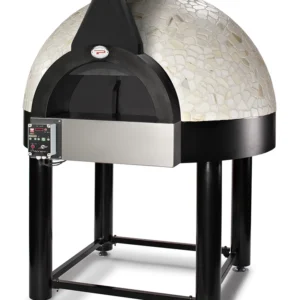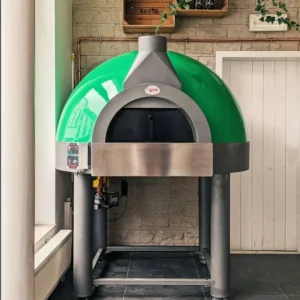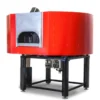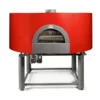PVP 150 TW ROUND
PVP 150 Round is a combination oven with a rotating monoblock hearth that allows you to bake up to 18 pizzas or pizzas per meter with ease. The flat vault and high-density refractory concrete walls enhance heat retention and achieve exceptional heat reactivity, enabling the oven to reach temperatures from 100°C to 300°C in just 60 minutes.
Like all our ovens, this model is handcrafted in Italy, backed by a warranty, and available pre-assembled or as a customizable assembly kit. Choose the quality of artisanal tradition combined with innovation: We’ve got you covered worldwide. Contact us.
Please note: The images on this site serve informational purposes only and may include accessories that are not supplied as standard. Attention: the video rendering does not always allow faithful reproduction of colors and shades compared to the originals.
Capacity
14/18 pizzas
Power
Wood and/or gas
Hearth
Rotating, 150 cm diameter
Vault
Flat
Lining
Standard red sheet metal, customizable with color as desired
Hearth thickness
7 cm
Included
-
Optional
-
